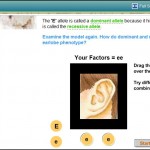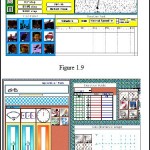Dilution is a concept that students have difficulty understanding and applying correctly when taken out of the math classroom and placed in a lab environment. Questions like “Which formula do we use for this one?” indicate to me that students only have a “shallow understanding” of the material (Edelson, 2001). Also, students perform better on the quiz associated with dilution (i.e. Chapter 5) than an exam involving a larger part of the course and therefore more chapters. Even though the same wording is used as in the practice and quiz questions, still students struggle. The goal of our program is to graduate students who have the knowledge, skills, and abilities to do the job; they should be confident and “work-ready.”
Instead, many of my students voice concerns about their ability (or lack of ability) to transfer their knowledge, of math in particular, to the workplace. I believe their motivation in learning the math in the first place was clearly achievement-based (“Whew, I passed the test”) versus content-focused that Edelson (2001) claims is needed to develop “robust” learning; the very learning that students need to take into a lab environment and perform well.
It turns out the “cookie-cutter” textbook is actually doing my students a disservice in some cases. Pellegrino et al (2008) says “(Undergraduates) must learn to deal with the ambiguity of dealing with novel situations and develop strategies and attributes for managing the dynamics of these situations” (p. 297). What my textbook does best is take away any ambiguity whatsoever. It says, in essence, “All of the practice questions at the end of this chapter will require you to use this formula”. No wonder students have difficulty understanding the math needed in lab; the textbook is no longer the focus.
Using the T-GEM (Khan 2010) model to create a lesson on DILUTION, I would use WISE to create an exercise similar to those in ChemLand:
- Introduce students to the concept by using a “real” example of a named medication solution (500 mL of a 25% solution with the addition of water makes 2500 mL of a 5% solution). Students would be asked much water was added? What happens to the concentration of the second solution with the addition of water?
- Describe and practice with the various methods used (C1xV1 = C2xV2; multi-step proportional math).
- G –Ask students to predict what would happen to the Concentration (or Volume) of the second solution by manipulating the Concentration of the first (diagram).
- E – Ask students to predict why adding water to a lower concentration solution cannot increase the concentration of the second solution. Create a simulation to demonstrate.
- M – Ask students to summarize their understanding of the relationships in dilution and to create a new example using a different drug.
References
Edelson, D.C. (2001). Learning-for-use: A framework for the design of technology-supported inquiry activities. Journal of Research in Science Teaching, 38(3), 355-385.
Khan, S. (2010). New pedagogies for teaching with computer simulations. Journal of Science Education and Technology, 20(3), 215-232.
Pellegrino, J.W. & Brophy, S. (2008). From cognitive theory to instructional practice: Technology and the evolution of anchored instruction. In Ifenthaler, Pirney-Dunner, & J.M. Spector (Eds.) Understanding models for learning and instruction, New York: Springer Science + Business Media, pp. 277-303.




